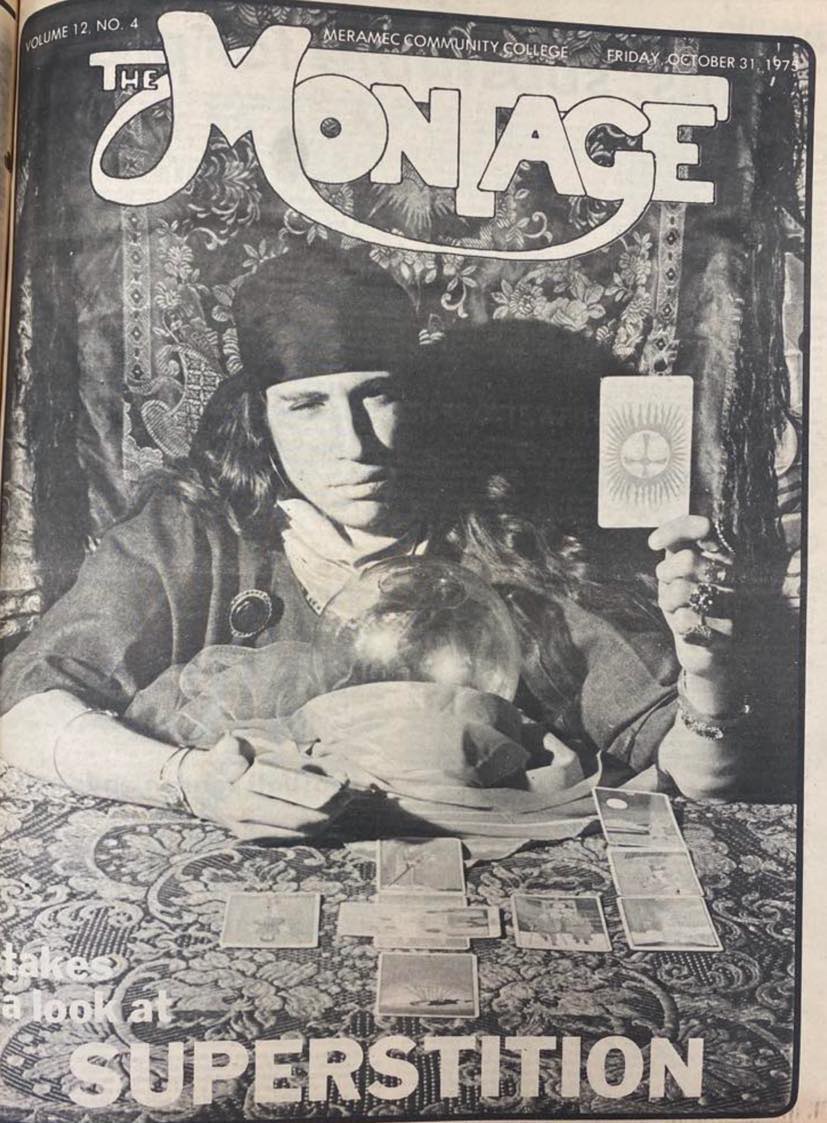A look back at the Oct. 31, 1975 issue
BY: JACOB POLITTE
Managing Editor
As The Montage approaches 60 years in print, it’s notable that archived digital copies that can be viewed by readers on The Montage’s “Issuu” page only date back to 2010. The rest are not lost to time, however. Print copies, both loose and binded, still exist. They date all the way back to the very first issue in 1964 and can be accessed in the Library.
As we approach our sixtieth year in publication, The Montage would like to take you back in time to some of those issues throughout the coming school year. This month, we’re going all the way back to the Oct. 31, 1975 issue.
1975 was a different time. STLCC wasn’t even called STLCC for one thing; the college was known as the Junior College District of St. Louis-St. Louis County until the following year. But The Montage was in its eleventh year of print, and the center page spread in the Halloween issue wasn’t afraid to get spooky.
Pages 6 and 7 of that issue contained four spooky pieces. “Halloween down through the ages” by Karen Allen gives a brief overview of how the holiday came to be, while Clay Slover’s “Explaining some favorite myths” did exactly what it teased. Mickey Jorden’s “The Superstitious world of pro sports” discusses the weird worlds of sports and the strange rituals of some baseball players and teams, while Bob Theiss’s “Three old fear-friends” reflects on famous supernatural tales across the globe.
In another non-spooky item, a discussion of Meramec’s discontent concerning lack of a radio station popped up. Florissant Valley’s radio station, 89.5 KCFV-FM is still in service today. An Op-Ed piece reads:
“The district is set up this way to allow specialization. All schools have areas of specialization; this gives the institutions an opportunity to concentrate efforts and become proficient in those areas. The JD Colleges are no different. Having three colleges that are exactly the same would be a duplication of effort and could stop any of the colleges from becoming accomplished in any specific areas.
The other reason for differences could be that there is not enough interest, support or financial backing on the campus for a certain project or projects. In other words, if no one cares, no one works, and no one pays; nothing happens. And one must go elsewhere.
The fact is, that due to the different makeup of the three colleges, they are going to have differences in programs, classes, faculty, organizations, and activities. So one college might offer something that one or both of the others do not. In addition there may be differences in programs or projects due to lack of interest, support, or financial backing on campus.
No one is getting cheated. It is a matter of avoiding duplication and meeting the needs of each particular college.”












